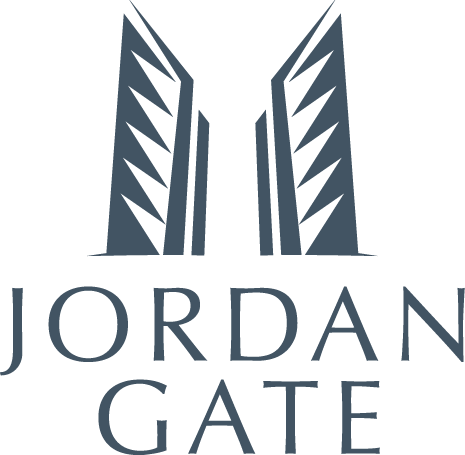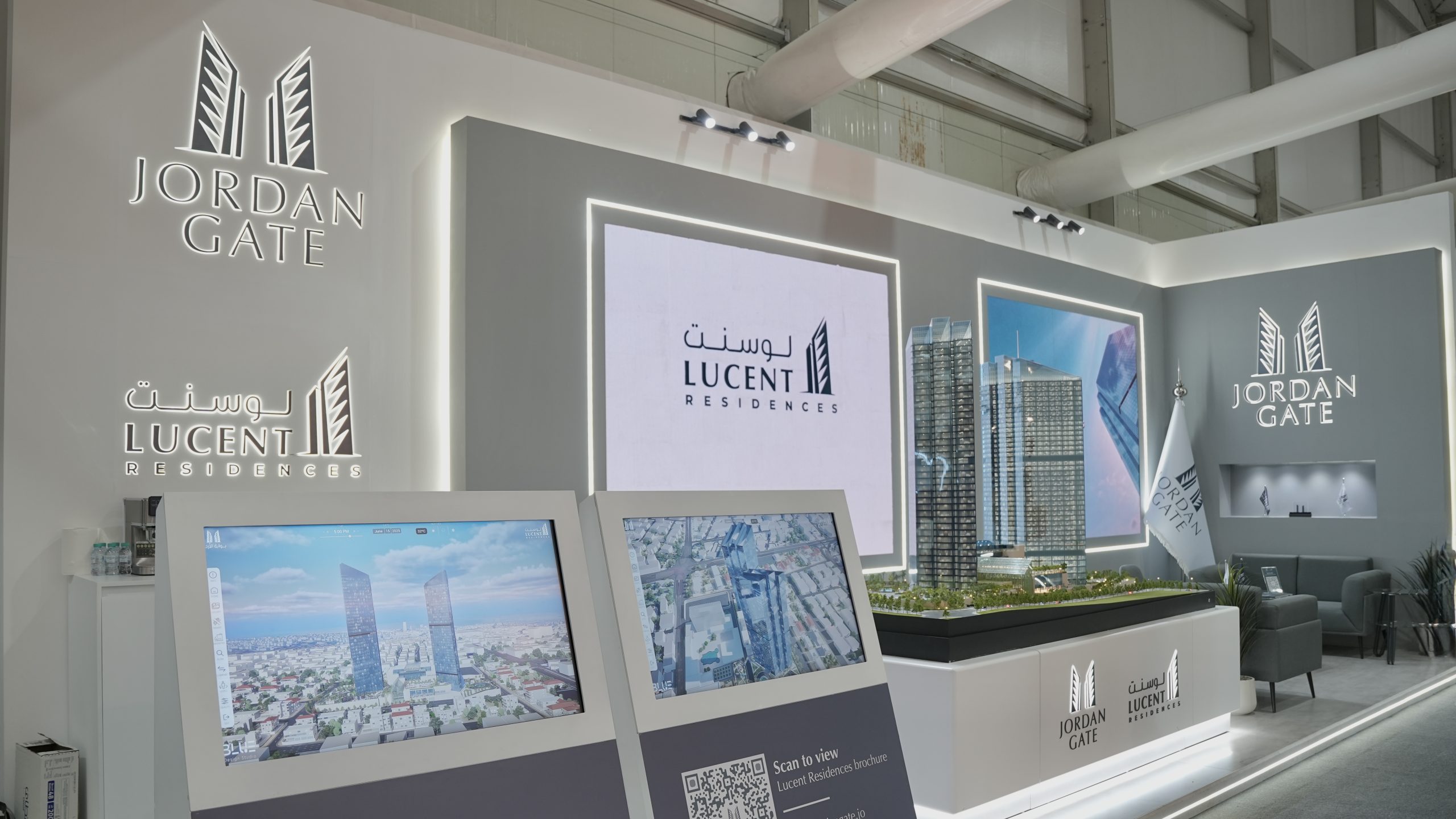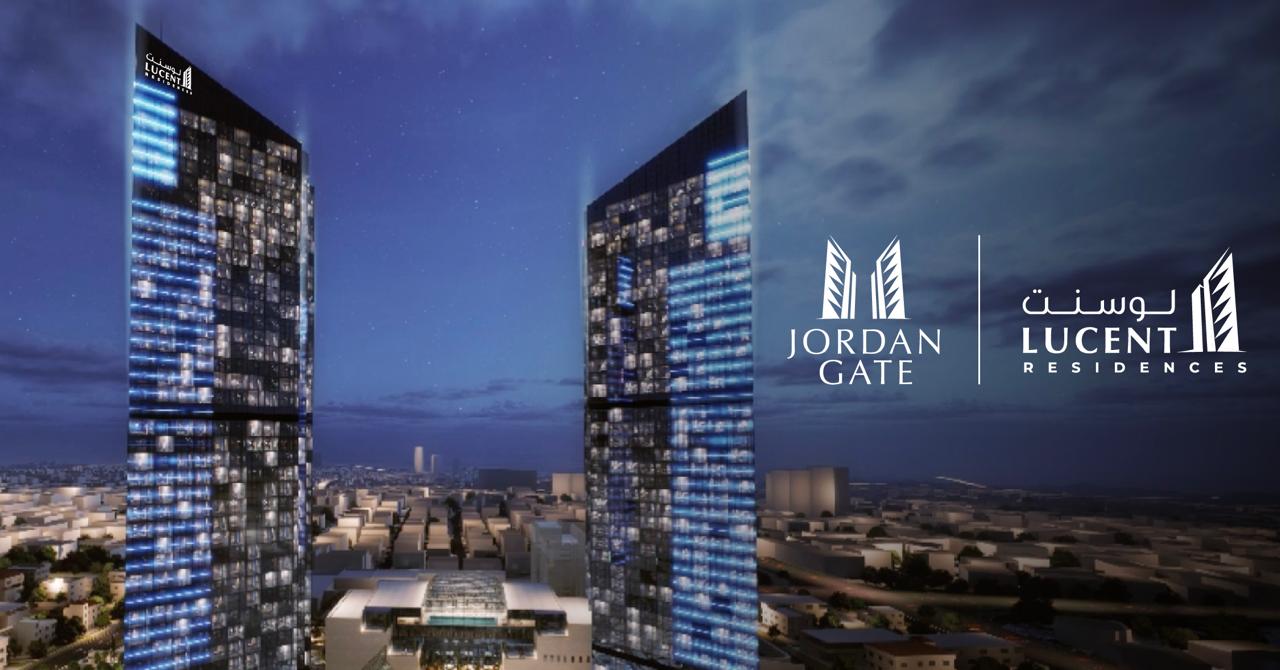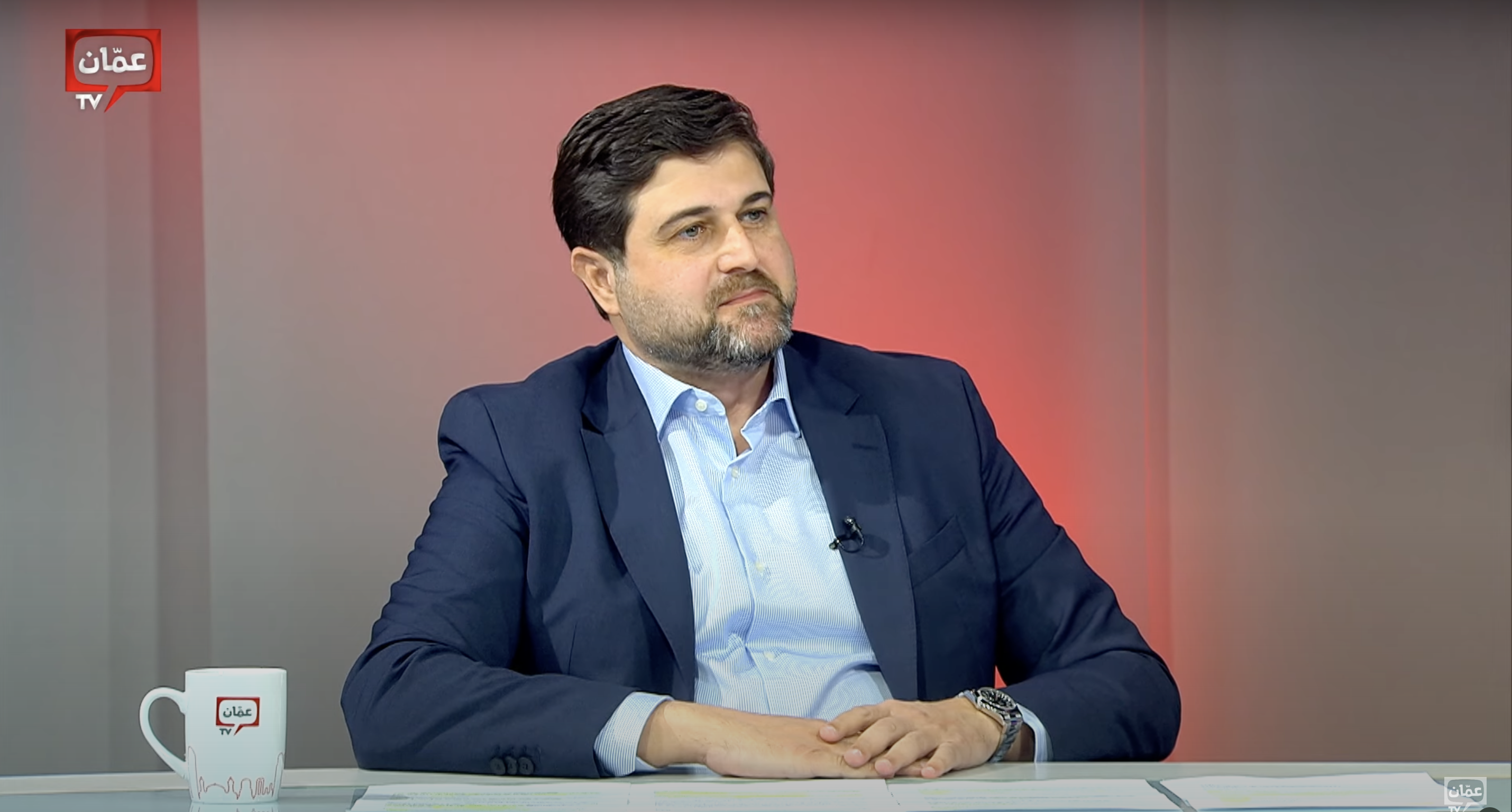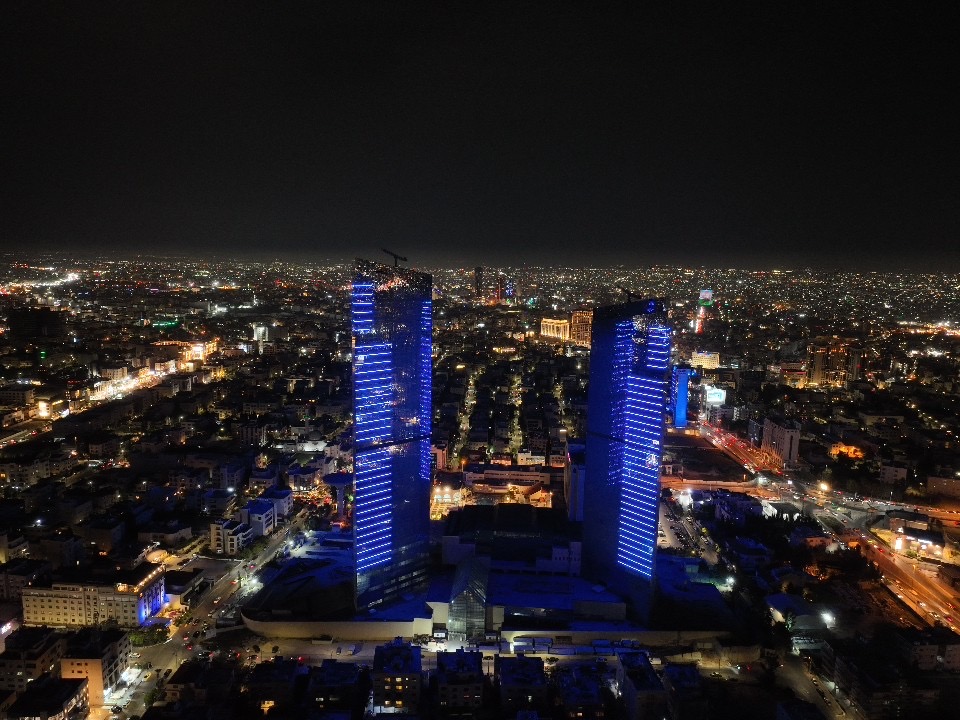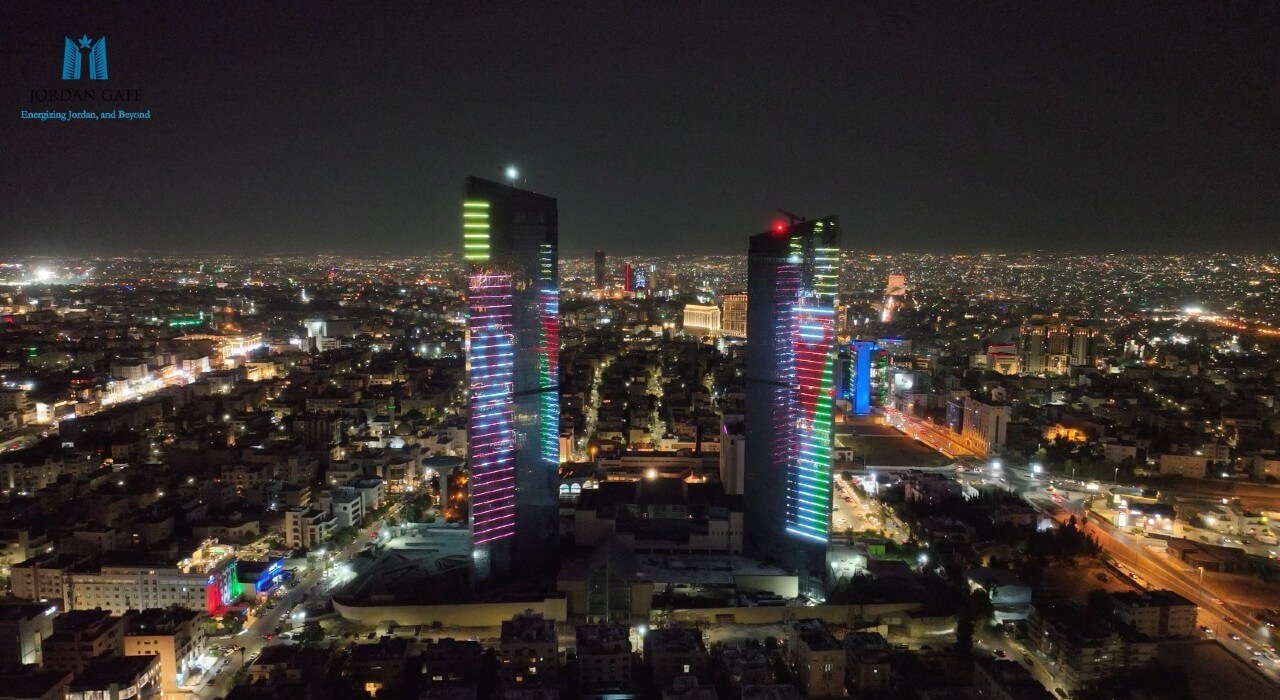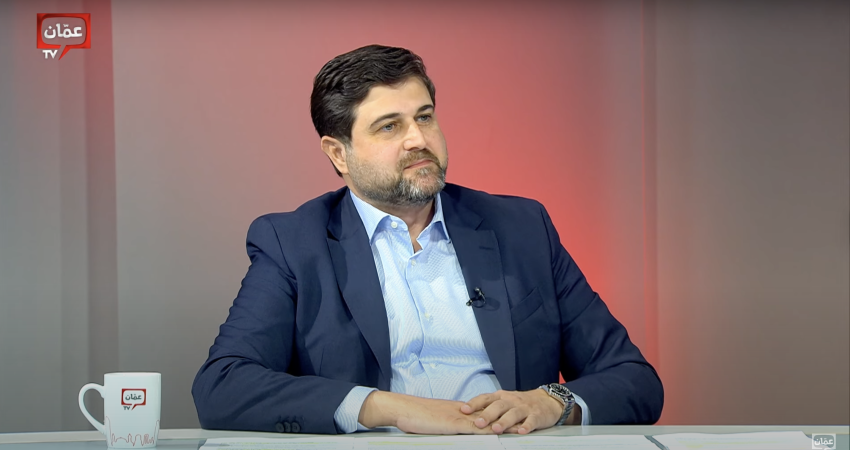
Abdul Rahman: Two towers, each 42 stories high, in addition to a shopping mall and multi-purpose facilities extending over a vast area of 28.5 dunams.
Abdul Rahman: Five underground floors allocated for parking with a capacity of more than 1,700 vehicles.
Abdul Rahman: The project includes 215 residential units of various sizes.
Abdul Rahman: Prices start at 1,600 dinars per square meter in an initial launch that covered 24 apartments.
Abdul Rahman: The project is “debt-free,” fully financed, and has no outstanding financial obligations.
Abdul Rahman: An independent sewage network at a cost exceeding five million dinars.
Abdul Rahman: Apartments are equipped with smart home automation systems enabling residents to manage services via mobile applications.
General Manager of Jordan Gate Company, Tarek Abdul Rahman, affirmed that the “Sixth Towers” project is not merely a resumption of work on an ordinary urban development, but rather a challenge the company committed itself to before the local community, the government, and investors. It has transformed into a story of determination to achieve completion after a suspension that lasted more than ten years.
Abdul Rahman began his remarks—during an episode of the program “Friendly Fire” presented by media figure Dr. Hani Al-Badri—by noting that for some people, the project had become a symbol of fear and doubt. For him and his team, however, it represented a true challenge that they pledged to see through to the end, despite the administrative hurdles of past years, as well as the regional challenges and fluctuations in the investment climate, all of which contributed to delaying the project for a long period.
He emphasized that the company was able to reformulate its plans and move forward with a new, clearer, and steadier approach after overcoming legal and regulatory obstacles. This was done in cooperation with the Jordanian government, represented by the Greater Amman Municipality, which became a main partner in the project with a 31% share. This partnership provided the project with strong momentum and increased confidence in its serious completion.
As Abdul Rahman explains, the project consists of two towers, each 42 stories high, in addition to a shopping mall and multi-purpose facilities extending over an expansive area of 28.5 dunams. He pointed out that in the new design, the company was keen to ensure the project would be fully integrated in terms of services—not only in terms of residential or commercial spaces, but also with regard to infrastructure, especially parking, which is always a concern in any large urban development.
He revealed that five underground floors have been allocated for parking that can accommodate more than 1,700 vehicles, in addition to external parking. A significant portion is reserved for residents, thereby easing expected traffic congestion around the surrounding area and offering practical solutions to one of the main concerns raised by nearby residents.
Abdul Rahman clarified that the first phase of work, launched in the last quarter of 2022, focused on rehabilitating the glass facades and maintaining them, replacing broken panels, and completing the metal framework at the top of the towers so the structures appeared complete from the outside. The second phase included interior finishing works and the electrical and mechanical systems for the residential tower and shopping mall, as well as external facilities such as parking, gardens, and green spaces.
He explained that the interior design was completely reformulated to align with international standards, civil defense requirements, and modern systems. Rather than relying on what had been in place before the suspension, a complete overhaul of systems and technologies was undertaken to align with the latest advancements in the construction industry.
Regarding the residential tower, Abdul Rahman revealed that the project includes 215 residential units of varying sizes, ranging from one-bedroom apartments up to four-bedroom apartments. These were distributed thoughtfully across the floors, with sufficient elevators to avoid crowding. He highlighted that this range of unit sizes was designed to meet the diverse needs of different residents.
He noted that the residential tower includes 14 elevators—nine dedicated to residents, in addition to service elevators and a dedicated fire elevator. He added that the design aimed to provide a comfortable and comprehensive living experience, with spacious units and diverse facilities, making the apartments an ideal choice for both residents and investors.
On pricing, Abdul Rahman confirmed that the company set realistic, non-exaggerated prices, mindful of current conditions in Jordan’s real estate market. Prices were based on a careful cost study, striking a balance between quality and affordability. Prices start at 1,600 dinars per square meter, in an initial launch covering 24 apartments. This launch attracted strong demand from Jordanians, expatriates, and Arab and foreign investors—an encouraging sign of trust in the project and its economic viability.
Addressing the rumors that surrounded the project in past years, Abdul Rahman explained that these only served as further motivation to press forward. He stressed that the suspension was not due to bankruptcy or financial incapacity, as was rumored, but rather due to administrative challenges and the direct impact of the 2009 global financial crisis, which affected many investment projects in the region.
He added that the project was not suspended for 20 years, as is sometimes claimed, but in fact from 2012 until 2022—a span of 10 years—before being relaunched under a new plan with a clear budget, free of debts or outstanding obligations.
In the same context, Abdul Rahman emphasized that financing for the project is stable and self-sufficient, with contributions from regional partners in Kuwait, in addition to the Greater Amman Municipality. He pointed out that the company’s paid-up capital is 163 million dinars, providing a strong foundation for relaunching the project without the need for borrowing or burdensome financial commitments.
On the urban and architectural dimension, Abdul Rahman explained that the Sixth Towers are not just residential or commercial buildings, but a project aspiring to become a new icon of Amman—a vertical city with integrated services, combining residential facilities, commercial areas, and green spaces, offering its residents and visitors a unique experience.
He added that the design, conceived by the late architect Jaafar Tuqan, carried in its essence the symbolism of a “gate,” making the project a true gateway to Jordan from Queen Alia International Airport toward the capital. For those arriving in Amman, it would stand as a distinguished landmark of urban identity.
The project also includes a shopping mall with a total area of 14,000 square meters, comprising about 72 retail stores. These will have the opportunity to attract international brands, along with services such as banks, pharmacies, cafés, and restaurants.
Abdul Rahman confirmed that the company has already received offers from prominent brands, and the interest in reservations and negotiations reflects market confidence in the new mall, which is envisioned not only as a shopping destination but also as a space serving the surrounding community.
Regarding infrastructure, Abdul Rahman stated that the company, in cooperation with the Water Authority and Miyahuna (the Amman water company), completed a vital project establishing an independent sewage network for the development at a cost exceeding five million dinars, ensuring that the local network in the area would not be burdened.
He also referred to the comprehensive traffic study conducted by a specialized firm in cooperation with the Greater Amman Municipality. It resulted in practical solutions to avoid congestion, including the allocation of service roads for the commercial center and strategic expansions of surrounding streets, with part of the project’s land used to improve traffic flow and facilitate vehicle movement.
As for the delivery schedule, Abdul Rahman confirmed that the residential tower and mall are expected to be completed and handed over during 2026. The future of the southern tower is under study and may be transformed into a hotel or multi-use building, depending on feasibility studies that will be finalized by the end of this year.
Abdul Rahman noted that the project has created both direct and indirect job opportunities. Currently, more than 500 workers and technicians are employed through the contractor, along with engineers, suppliers, and Jordanian partner companies—from engineering and supervision firms to specialized electromechanical contractors. In addition, supply contracts have been signed with international companies such as Hitachi for elevators and Samsung for air-conditioning systems, but through Jordanian agents. This provides added value to the national economy by supporting local companies and creating new job opportunities.
He highlighted that the project embraces the latest building technologies and smart solutions. An agreement was signed with Zain Jordan to provide integrated digital infrastructure for communications, internet, and data. Apartments have been equipped with smart home systems enabling residents to manage their services via mobile applications—from air conditioning to lighting. Furthermore, the old air-conditioning systems were replaced with new, independent units for each apartment, ensuring higher efficiency and lower energy consumption.
Abdul Rahman acknowledged that the project also faced labor-related challenges, as the Jordanian contractor executing the works struggled to attract skilled local labor, forcing reliance on Arab workers for certain specializations. The company attempted to involve Jordanian youth in the project, but weak interest and a tendency to avoid certain construction trades made the task more difficult.
Responding to a question on the broader economic value of the project, Abdul Rahman stressed that the Sixth Towers are not just a real estate investment, but a project with a national economic dimension. It restores confidence in investing in Jordan after years of doubt linked to its suspension, while stimulating construction, supply, and service sectors. It also generates tax revenues, creates direct and indirect jobs, and attracts the attention of Arab and foreign investors.
He recalled the moment the project was illuminated during the celebrations of His Majesty the King’s Silver Jubilee, describing it as both a moment of pride and pressure. He felt the project was now under the scrutiny of both the state and society, doubling the responsibility to complete it on time and to the required standard.
He concluded by confirming that the project is currently progressing according to a well-studied and clear plan, with completion of the residential tower and surrounding facilities surpassing 82%. He affirmed that the near future will witness the completion of this architectural landmark, which will redefine Amman’s image as a modern city blending heritage with modernity, and offering a new model of urban development in Jordan.
